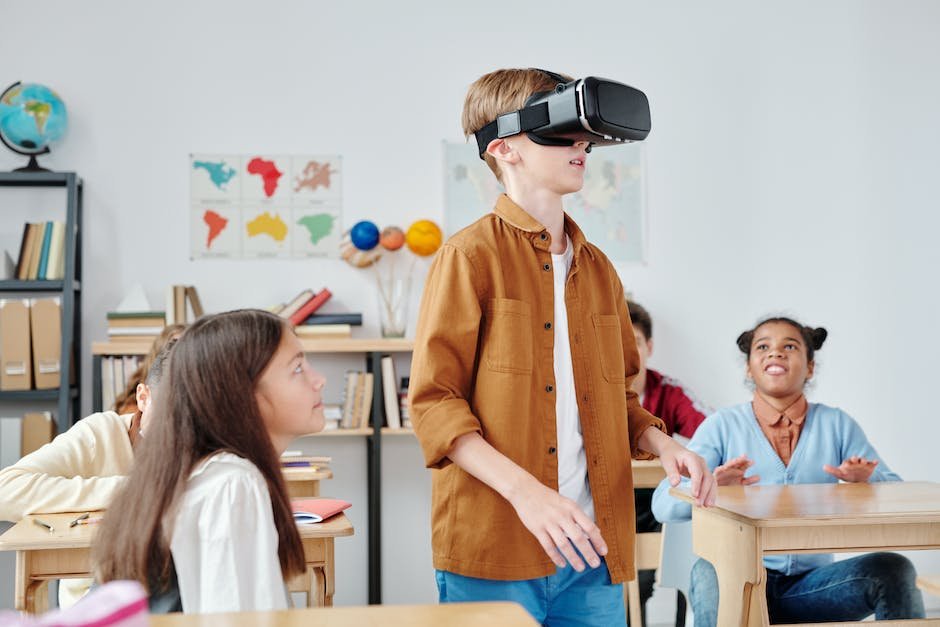As we surge ahead into the burgeoning digital era, one aspect of our lives that has witnessed a dramatic transformation is education, particularly the concept and practice of cyber schooling. Touted as the embodiment of educational evolution, cyber schooling has carved out its own niche, offering a unique blend of flexibility, accessibility, and personalized learning.
As a modern approach to education, cyber schooling has its roots entrenched in the past, tracing back to early forms of distance learning. Embracing technology and internet capabilities, this alternative form of learning has unfolded a myriad of learning opportunities and challenges. Delving into the operational aspects of cyber schooling reveals a fascinating interplay of technology and pedagogy, designed to deliver a streamlined learning experience.
The roles of teachers, parents, and students in this virtual realm have been redefined and even revolutionized. As we glance towards the future, cyber schooling shows promising prospects of further transforming the educational landscape.
Concept and History of Cyber Schooling

Defining Cyber Schooling
Cyber schooling, also commonly referred to as online learning, e-learning, or distance learning, is an instructional model where students learn from remote or off-campus locations through the internet. This form of education typically employs synchronous or asynchronous online instructional methods which can include video conferencing, online assignments, digital textbooks, and discussion boards.
This style of learning has opened new avenues for education, allowing students who may be unsuited or unable to attend a traditional brick-and-mortar school, due to various reasons including health issues, geographical challenges or personal preferences, to receive education effectively and efficiently.
Early Beginnings of Distance Learning
The history of distance learning dates back to the 18th century when Isaac Pitman taught shorthand via correspondence. This method of education was conducted via the post; students would send their assignments to the teacher who would grade them and send them back along with new assignments. The University of London was the first higher educational institution to offer distance learning degrees in 1858, paving the way for the foundation of cyber schooling.
Radio, Television and the Expansion of Distance Learning
With the rise of mass media, distance learning evolved. In the 1920s, the introduction of radio offered an innovative platform for learning, with several institutions offering educational programs. Television further expanded the scope of distance learning in the 1950s and 60s with broadcasts of educational content, and colleges like the University of Wisconsin using it to deliver coursework.
Introduction of E-Learning
The era of digital education started in the 1960s with the creation of Programmed Logic for Automatic Teaching Operations (PLATO), which was a first-of-its-kind computer-assisted instruction system. Over the next few decades, the growth of the internet rapidly accelerated the development and accessibility of online learning. Formal college programs began to emerge, leveraging web-based platforms to deliver instruction.
Modern Cyber Schooling
In the late 90s and early 2000s, high-speed internet became widely available and became the conduit for a wide array of virtual learning environments and learning management systems, creating a wave of virtual schools and online universities. This period also saw an increase in web-based course offerings at traditional universities.
In modern times, online learning has successfully wedged itself into the fabric of education. This integration is happening at every educational level, from elementary all the way up to college.
The onset of the COVID-19 pandemic not only emphasized the importance of cyber schooling but also accelerated its usage, as worldwide classrooms transitioned from the physical to the virtual. This growing trend underlines a clear commitment to using evolving technology in redefining the face of education, resulting in a dynamic, flexible, and inclusive educational model.
Benefits and Challenges of Cyber Schooling

Why Cyber Schooling Stands Out
Cyber schooling stands at an advantageous position primarily due to its ability to offer flexible education schedules. This flexibility proves to be a boon for families who are frequently on the move, for those juggling irregular work hours or even those students who just don’t seem to fit into traditional school schedules. This means students can benefit from 24/7 access to their coursework, allowing them to learn at their own pace and catering to different learning abilities.
Another unique aspect of cyber schooling is its capacity to provide personalized learning plans. With this feature, the academic curriculum can be tailored to fit each student’s strengths and improve their weaknesses, something that a typical, one-size-fits-all educational strategy in traditional schools often fails to deliver.
In addition to this, cyber schooling offers unrestricted access to a wealth of learning resources. This comes in the form of digital libraries, databases, and other resources that students would otherwise need to scout for in physical libraries or bookstores that are often remote or inaccessible. Such digital accessibility gives students an edge in conducting thorough research or pursuing their areas of interest.
Navigating the Challenges of Cyber Schooling
Though cyber schooling offers an array of advantages, it does not come without hurdles. A primary concern tends to be a potential sense of isolation. Unlike traditional schooling, which allows for constant face-to-face socialization, cyber schooling doesn’t provide such opportunities. This lack of peer interaction and group dynamic could potentially lead to feelings of loneliness and estrangement.
The deficit of social interaction in online learning can also influence the cultivation of interpersonal skills, conflict resolution abilities, and teamwork capabilities. These skills are crucial in the real world, assisting individuals in navigating professional and personal environments successfully. When considering online education, it’s critical to understand this aspect.
Technical difficulties also present challenges within cyber schooling. Given that online learning relies heavily on technology, any hitch from a faltering internet connection to access issues with learning software can disrupt a student’s educational journey. Plus, not all households have the financial resources to regularly upgrade computer hardware or maintain high-speed internet subscriptions, adding an additional economic challenge.
Lastly, blurring the boundaries between school and home can make it harder for students to focus effectively on their studies, transforming familiar home surroundings into potential sources of distraction.
Despite these challenges, cyber schooling does enhance modern education with its unique benefits. However, these potential drawbacks need addressing for successful home-based learning to occur.
Operational Aspects of Cyber Schooling

A Closer Look at Cyber School Operations
Cyber schooling, alternatively known as online schooling, represents a contemporary form of education where students connect remotely to access academic content through electronic technologies. The operational aspects that differentiate a cyber school from traditional brick-and-mortar schools are its class conduct, technological tools, and strategies for evaluation and grading.
Conducting Classes in Cyber Schools
In a cyber school, classes are conducted virtually, with students and teachers interacting through a digital platform. The core instructional methodology can either be synchronous, where teaching is done in real time, or asynchronous, where education occurs at the student’s own pace. Predominantly, classes are conducted through live video lessons where the teacher presents the lesson and hosts collaborative discussions. Additionally, teachers can upload recorded video lessons and instructional materials for students to access at any time.
Technological Aids Utilised in Cyber Schools
The operation of cyber schools heavily relies on technology. Predominantly, the cyber schooling infrastructure requires steady access to a computer and a consistent internet connection. A variety of software programs and applications are also used to facilitate instruction and student interaction. Learning Management Systems (LMS) are employed to disseminate course materials, collect assignments, and record grades. Video conferencing tools such as Zoom or Google Meet are used to store lectures and facilitate live lesson interactions.
Testing and Grading in Cyber Schools
Assessment in the cyber schooling environment is a blend of traditional testing structures and innovative evaluation methods. Some online schools use proctored exams, where a monitor watches via webcam to ensure academic honesty. Others lean more heavily on coursework, such as essays, projects, and presentations that demonstrate a student’s depth of knowledge. Digital platforms also allow for the integration of interactive quizzes and tests that provide instant feedback to students. Grading in cyber schools can mirror traditional grading formats, with grades being designated based on the percentage of questions a student answers correctly. Additionally, students are often graded on their participation in discussion boards or their completion of interactive learning tasks.
Embarking on the Journey of Cyber Schooling
The journey through cyber schooling typically begins with an online application, followed by the submission of academic transcripts and other necessary details. This method of education offers flexibility by providing rolling admissions, allowing students to kick-start their education at any period within the year. Post enrollment, the progression through course requirements mirrors that of traditional schooling, with academic advisors and school counselors readily available for guidance. Just like brick-and-mortar schools, cyber schools also adhere to customary academic calendars and grade-level promotions.
The journey through cyber schooling, despite its non-traditional method, ends in graduation, a milestone celebrated with as much excitement and pride as in traditional schools. Graduates receive a diploma, as legitimate and recognized as any, from the cyber school. This certificate of completion can either be mailed to the student or awarded in an online graduation ceremony. From enrollment to graduation, cyber schools make full use of modern technology to provide an education system that is efficient, flexible and accommodating.
The Role of Teachers, Parents, and Students in Cyber Schooling

Digging Deeper into the Concept of Cyber Schooling
Cyber schooling, also referred to as online learning or e-learning, represents an educational model where all teaching and learning activities unfold remotely via the internet. In cyber schools, students typically listen to lectures, complete assignments, and communicate with teachers and classmates through digital platforms. Parents also become more involved with their child’s education compared to traditional schooling methods, playing a proactive role in their learning journey.
The Role of Teachers in Cyber Schooling
In a cyber schooling environment, educators’ roles extend beyond their conventional responsibilities. Although they still create lessons, assess students’ work, and guide students in their learning journey, they are also responsible for managing the digital classroom and contributing to a supportive online learning community. They regularly communicate with students through emails, video conferences, instant messaging, discussion boards, and virtual office hours for clarifying instructions, providing feedback, and answering queries. Moreover, they track their students’ progress, identify their strengths and areas of improvement, and adjust their teaching strategies accordingly. Cyber educators typically possess strong technology skills, maintain up-to-date knowledge on the latest e-learning tools, and adopt effective online teaching methodologies.
The Role of Parents in Cyber Schooling
Parents’ involvement is central to the cyber schooling framework, often serving as learning coaches. They collaborate with teachers to create conducive learning environments, setting up dedicated learning spaces at home, and ensuring reliable internet access. They help their children understand the course requirements, monitor their academic progress, keep them motivated, and assist in troubleshooting technical issues. Besides, they need to ensure that their children are maintaining social connections and engaging in extracurricular activities to foster balanced personal development. Similar to teachers, parents in this learning model need to be digitally literate to effectively support their child’s online learning.
The Role of Students in Cyber Schooling
In cyber schools, students need to take a more active role in their learning compared to traditional schooling. They must demonstrate high levels of discipline, motivation, and self-management, as they are in control of their study schedule. They interact and collaborate with their peers and teachers through online discussions, group projects, and other collaborative exercises conducted on virtual platforms. Using the tools and resources provided to them, they are expected to complete assignments and projects independently, while also seeking help from teachers and peers when required. Students also need to maintain their digital literacy skills and be comfortable using various online learning platforms and technologies.
Strategies for Successful Cyber Schooling
For cyber schooling to be successful, all parties involved – teachers, parents, and students – need to maintain effective communication channels. Regular meetings and open discussions can enhance the understanding of expectations and aid in addressing any issues faced. Apart from academic interaction, creating space for social interaction through virtual group activities can help students feel a sense of belonging. It’s also important to continuously monitor and assess the student’s progress to ensure they’re meeting their academic goals. Recognizing and celebrating achievements, no matter how small, can act as a motivational boost.
Addressing the Primary Issues
A frequently raised concern regarding cyber schooling is the potential for reduced social interaction, potentially leading to feelings of isolation. However, this can be avoided through the integration of engaging activities that promote interaction, such as virtual field trips, group projects, and online games to foster a sense of community. In addition, parents and educators can utilize various digital tools and software to keep track of students’ academic growth. Good communication is key in a cyber schooling environment – for this, tools like emails, video calls, and instant messaging can be used. This strategy ensures a healthy, collaborative partnership is formed among learners, parents, and educators.
The Future of Cyber Schooling

Delving Deeper into Cyber Schooling
Primarily delivered over the Internet, cyber schooling is a form of education where key content and instruction are provided online. This structure allows learners to study at a pace comfortable to them and provides flexibility in comparison to established schedules in traditional school settings. With the ever-increasing advancement in digital technology, coupled with wider Internet accessibility, the appeal and uptake of cyber schooling continue to flourish.
Advancements in Technology and Cyber Schooling
Technology advancements have always pushed the boundaries of educational possibilities, and cyber schooling stands to benefit significantly from these advancements. With the growth of artificial intelligence (AI) and machine learning, personalized and adaptive learning become possible. These technologies can analyze a student’s performance in real-time and adjust the curriculum accordingly to ensure optimal learning experiences.
Virtual Reality (VR) and Augmented Reality (AR) technologies are also poised to revolutionize cyber schooling. As immersive technologies, they have the potential to make online courses more engaging and interactive. Students can take virtual field trips, experiment in virtual labs, and interact with educational content in ways that were not possible before.
Shifts in Societal Attitudes Towards Cyber Schooling
As more people get acclimated to the digital environment, societal attitudes towards cyber schooling are also shifting. Initially, there were concerns about the quality of online education and its credibility. However, those misconceptions are getting dispelled as more accredited institutions offer online programs and employers recognize and respect online degrees.
Moreover, the COVID-19 pandemic has accelerated the adoption of online learning, making it more mainstream. This global health incident has forced many educational institutions to switch to remote learning, proving that with the right tools and strategies, online education can be just as effective, if not more so, than traditional classroom learning.
Cyber Schooling and the Future of Education
Cyber schools have the potential to fundamentally reshape the educational landscape. With the advent of cyber schooling, the rigid traditional school model will likely transition to a more fluid, personalized learning experience. Traditional classrooms might turn into a hybrid model, combining the best of online and in-person instruction.
Moreover, cyber schooling can improve access to education. Today, a student’s geographical location or economic situation can limit educational opportunities. Cyber school eliminates this geographic barrier, providing equal access to quality education, no matter a student’s location.
Furthermore, cyber schooling may also change the employer-student relationship. Cyber schools could join forces with businesses to offer vocational programs tailored to industries’ needs, providing students with opportunities to gain practical skills and make their transition into the workforce smoother.
Challenges and the Future
However, cyber schooling is not without its challenges. Issues such as digital divide, online distractions, and lack of interactive peer-learning can pose hurdles. To effectively shape the future of education, solutions to these problems need to be developed all while focusing on constant improvement and innovation.

From a bird’s-eye view, cyber schooling unfolds as a dynamic and transformative force in the realm of education. Its myriad benefits such as flexibility, personalization, and broad resource accessibility are shaping new learning paradigms. However, it’s essential to acknowledge the challenges this mode of learning presents, such as isolation, technology issues, and altered social interactions. Understanding the operational aspects of cyber schooling allows us to appreciate the complex interplay of systems and stakeholders, all striving to create an efficient and effective learning environment. The knowledge gathered dispels common misconceptions and facilitates more informed decisions by students, parents, and educators. As we ponder potential advancements and shifts in societal attitudes, the future of cyber schooling propels us to consider how our choices today will influence the educational experiences of generations to come.
Explore further







